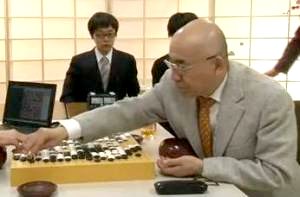Zen program beat professional player 9 dan with a handicap of 4 stones
 On March 17, two games were played in go between the Zen19 program created by Japanese programmer Youji Ojima and professional player Takemiya Masaki , holder of 9th dan, one of the best players in the world. In the first game, with a handicap of 5 stones, the program won by a margin of 11 points; in the second game, with a handicap of only 4 stones, she managed to beat Masaki by 20 points. In the amateur go, each handicap stone corresponds to the next level of skill, and in the professional one, the difference in 1 stone corresponds to 3 danes. In the ranking of the popular game server KGS Zen19 now has 6 dan. This means that the program has almost reached the highest level of amateur and can soon go into the "big league" of go. After the match, Takemiya Masaki admitted that he did not expect such a high level from the computer. Zen worked on a mini cluster of four computers (dual 6-core Xeon X5680 / 4.2 GHz, 6-core Xeon W3680 / 4 GHz and two 4-core i7 920 / 3.5 GHz) connected by a gigabit network.
On March 17, two games were played in go between the Zen19 program created by Japanese programmer Youji Ojima and professional player Takemiya Masaki , holder of 9th dan, one of the best players in the world. In the first game, with a handicap of 5 stones, the program won by a margin of 11 points; in the second game, with a handicap of only 4 stones, she managed to beat Masaki by 20 points. In the amateur go, each handicap stone corresponds to the next level of skill, and in the professional one, the difference in 1 stone corresponds to 3 danes. In the ranking of the popular game server KGS Zen19 now has 6 dan. This means that the program has almost reached the highest level of amateur and can soon go into the "big league" of go. After the match, Takemiya Masaki admitted that he did not expect such a high level from the computer. Zen worked on a mini cluster of four computers (dual 6-core Xeon X5680 / 4.2 GHz, 6-core Xeon W3680 / 4 GHz and two 4-core i7 920 / 3.5 GHz) connected by a gigabit network.Computer go is a much more difficult task for artificial intelligence than chess. The best chess programs today far exceed the level of man. Garry Kasparov's record in the Elo rating is 2851 points, while the leader by Elo rating among computers - Houdini - 3310. This means that out of 10 games the best player in the rating will be able to win only one computer.
The go board has dimensions of 19x19 cells, the number of possible moves in most positions is also much higher, besides, if the number of pieces in chess decreases during the game, making the task easier, in go it is the opposite. This makes creating a strong game program in go a lot more difficult. For example, endgame bases are widely used in chess programs - pre-calculated options for completing a game when there are few pieces left on the board. For go to make such a base is almost impossible. Thus, now the go is a reference task for developing algorithms of artificial intelligence and the theory of decision making.
')
Source: https://habr.com/ru/post/140244/
All Articles